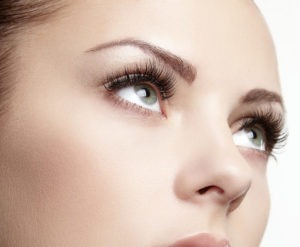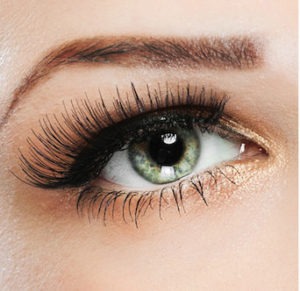 When it comes to lower eyelid rejuvenation, there are two main options: lower eyelid surgery and dermal fillers. It can be difficult to know which procedure is the right choice for you, so it’s important to understand the differences between the two. In this blog post, we will take a look at the advantages and disadvantages of lower eyelid surgery and dermal filler options, so you can make an informed decision about which treatment is best for you. Khan Eyelid and Facial Aesthetics, led by oculoplastic and reconstructive surgeon Dr. Tanya Khan, provides eyelid surgery to patients in Plano, Dallas, Austin, Texas, and surrounding locations.
When it comes to lower eyelid rejuvenation, there are two main options: lower eyelid surgery and dermal fillers. It can be difficult to know which procedure is the right choice for you, so it’s important to understand the differences between the two. In this blog post, we will take a look at the advantages and disadvantages of lower eyelid surgery and dermal filler options, so you can make an informed decision about which treatment is best for you. Khan Eyelid and Facial Aesthetics, led by oculoplastic and reconstructive surgeon Dr. Tanya Khan, provides eyelid surgery to patients in Plano, Dallas, Austin, Texas, and surrounding locations.
Understanding the Purpose of Lower Eyelid Surgery and Dermal Fillers
If you are considering a cosmetic treatment to enhance the appearance of your under-eye area, you might be wondering which option is best for you: lower eyelid surgery or dermal fillers. Both options can help to reduce the appearance of under-eye bags and wrinkles, but they work in different ways and have their own advantages and limitations.
Lower eyelid surgery, also known as blepharoplasty, is a surgical procedure that involves removing excess skin and fat from the lower eyelid area. The purpose of this procedure is to improve the overall appearance of the under-eye area by reducing puffiness and dark circles, while also tightening and smoothing the skin.
Dermal fillers, on the other hand, are non-surgical treatments that involve injecting a gel-like substance into the skin to add volume, fill in wrinkles, and improve the overall contour of the under-eye area. These fillers can help to reduce the appearance of under-eye bags and dark circles by plumping up the area around them.
Overall, the purpose of both lower eyelid surgery and dermal fillers is to enhance the appearance of the under-eye area and give a more youthful, rested look. However, they work in different ways and may be better suited for different people depending on their individual concerns and goals. It is important to speak with a qualified medical professional to determine which option is best for you.
Dermal Fillers How They Work, Types of Fillers Available, and Results to Expect
Dermal fillers are a popular non-surgical option for individuals looking to rejuvenate the appearance of their lower eyelids. These fillers are composed of a gel-like substance that is injected into the skin around the eye area to restore volume and smooth out fine lines and wrinkles.
Different types of dermal fillers are available, including hyaluronic acid (HA) fillers, calcium hydroxylapatite (CaHA) fillers, and poly-L-lactic acid (PLLA) fillers. HA fillers, such as Restylane and Juvéderm, are the most commonly used for the lower eyelid area due to their ability to attract and retain moisture, which can improve skin texture and reduce the appearance of wrinkles.
The results of dermal filler treatments can be seen immediately and typically last between 6-18 months, depending on the type of filler used and individual factors such as metabolism and lifestyle habits.
It is important to note that while dermal fillers can provide a temporary solution to the signs of aging around the lower eyelids, they do not address underlying structural issues such as excess skin or fat. In these cases, lower eyelid surgery may be a more suitable option.
When considering dermal filler treatments for the lower eyelids, it is essential to consult with a qualified and experienced injector who can assess your specific concerns and recommend the most appropriate filler and technique for your individual needs. As with any cosmetic procedure, results may vary, and potential risks and complications should be discussed thoroughly with your injector before proceeding with treatment.
Comparison Between Lower Eyelid Surgery and Dermal Filler Options
While both lower eyelid surgery and dermal fillers can address signs of aging around the eyes, they differ in terms of how they work and the results they can achieve. Here’s a closer look at the key differences:
– Approach: Lower eyelid surgery involves making incisions in the skin around the lower eyelid to remove excess skin, fat, or muscle. Dermal filler injections, on the other hand, involve injecting a gel-like substance into the skin to add volume and smooth out wrinkles.
– Results: Lower eyelid surgery can achieve a more dramatic improvement in the appearance of the lower eyelid area, as it can address issues like under-eye bags and sagging skin. Dermal fillers can improve the appearance of wrinkles and hollows, but the results may not be as significant as those achieved with surgery.
– Longevity: Lower eyelid surgery provides permanent results, whereas dermal fillers are temporary and require regular touch-up injections to maintain the desired results.
– Risks: Both procedures come with some risks, such as bruising, swelling, and infection. However, lower eyelid surgery carries a higher risk of complications such as bleeding, scarring, and changes in eye shape or function.
– Cost: Lower eyelid surgery is typically more expensive than dermal filler treatments. However, the cost will vary depending on the individual’s needs and goals.
Overall, the decision between lower eyelid surgery and dermal fillers will depend on several factors, including the individual’s specific concerns, budget, and risk tolerance. It’s important to consult with a qualified and experienced plastic surgeon or dermatologist to determine which option is best for you.
Factors to Consider Before Making Your Decision
Both lower eyelid surgery and dermal filler treatments can address common concerns such as under-eye bags, hollows, and wrinkles. However, there are important factors to consider before making your decision on which treatment option to choose.
Cost: Dermal filler treatments are generally less expensive than lower eyelid surgery. However, filler treatments need to be repeated every few months to maintain the results, which can add up in cost over time. In contrast, lower eyelid surgery provides long-lasting results, making it a cost-effective option in the long run.
Extent of the Concern: Dermal fillers work well for mild to moderate concerns, but may not be sufficient for more severe issues. For significant under-eye bags, excess skin, or severe wrinkles, lower eyelid surgery may be the better option to achieve desired results.
Preference for Non-Surgical Treatments: If you prefer non-surgical options, dermal fillers may be a better fit for you. With little downtime and a quick recovery period, they can provide subtle yet effective results. However, if you don’t mind a more invasive procedure and prefer longer-lasting results, lower eyelid surgery may be the right choice.
Medical History: Your medical history and any pre-existing medical conditions can affect your candidacy for both treatment options. Consult with your doctor to determine if any conditions or medications may interfere with either treatment.
Overall, it’s important to consult with a qualified medical professional to determine the best treatment plan for your individual needs. By considering the factors mentioned above and discussing your concerns with your doctor, you can make an informed decision on whether lower eyelid surgery or dermal filler treatments are right for you.
Recovery Time and Aftercare for Lower Eyelid Surgery vs Dermal Filler Treatments
After undergoing any cosmetic procedure, it is important to know what to expect during the recovery process. The recovery time and aftercare needed will vary depending on the type of treatment you choose.
Recovery Time for Lower Eyelid Surgery:
After lower eyelid surgery, you should expect to take a week off from work or other activities to rest and heal. Swelling and bruising are common and may take several weeks to fully resolve. You will need to avoid strenuous activities and exercise for at least two weeks to allow your body to heal. Your doctor may also prescribe pain medication and eye drops to manage discomfort and reduce the risk of infection.
Aftercare for Lower Eyelid Surgery:
To ensure a smooth recovery, it is important to follow your doctor’s aftercare instructions carefully. This may include applying ice packs to your eyes, keeping your head elevated while sleeping, and avoiding contact lenses or eye makeup for several days. You will also need to attend follow-up appointments to monitor your progress and ensure proper healing.
Recovery Time for Dermal Filler Treatments:
Dermal filler treatments are minimally invasive, and there is little to no downtime associated with the procedure. You can return to your normal activities immediately following the treatment. However, some swelling or bruising may occur and can take several days to fully subside.
Aftercare for Dermal Filler Treatments:
After a dermal filler treatment, it is important to avoid touching or rubbing the treated area for at least 24 hours to prevent the filler from shifting. You should also avoid strenuous exercise or exposure to extreme heat or cold for at least 24 hours after the treatment. Additionally, you should attend follow-up appointments to ensure the desired results have been achieved and to determine if any touch-up treatments are necessary.
Ultimately, the recovery time and aftercare required for each procedure will depend on your unique circumstances. It is important to discuss your concerns and goals with your doctor to determine which treatment option is right for you.
Contact Khan Eyelid and Facial Aesthetics and Oculoplastic & Reconstructive Surgeon Dr. Tanya Khan Today to Schedule an Appointment
For more information about procedures and treatments at Khan Eyelid and Facial Aesthetics by Ophthalmic surgeon Dr. Tanya Khan. Click here to contact us.
Taking patients from in and around Dallas, Plano, Fort Worth, Grapevine, Garland, Mesquite, Carrollton, Irving, Frisco, Texas and more.


 If you have recently undergone a
If you have recently undergone a 






Schedule a Consultation: 972-EYE-LIDS (393-5437)